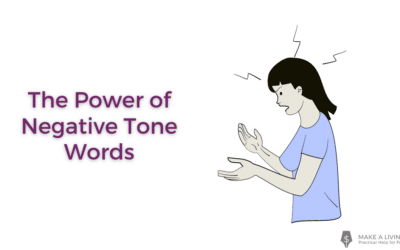What’s your daily freelance rate?
If you’re like most freelance writers, it probably hasn’t crossed your mind.
Maybe you’re just starting out or struggling to find clients, and you’re focused on just landing a paid assignment.
Even if you’ve been in the game a little longer, a lot of writers still don’t know their daily freelance rate.
They’re focused on hitting deadlines, networking, and making room on their client list to move up and earn more, but don’t think about this.
Why? Maybe it sounds like too much of a bean-counting exercise for writers to calculate their daily freelance rate.
Here’s the thing. If you don’t know your daily freelance rate, every time you:
- Land an assignment…
- Quote a project, or
- Sign on a new client…
You could be missing out on more money, time and freedom (possibly the three most attractive reasons to be a freelancer).
Is knowing your daily freelance rate really that important? And if it is, how do you figure it out so you don’t sell yourself short? Here’s what you need to know.
This is WHY your daily freelance rate matters
As freelance writer, you need to set a goal of having a high hourly rate (like $100 an hour or more).
But bidding per project based on an hourly rate isn’t the best way to move up and earn more.
Before you bid on a project, you need to know your daily freelance rate.
daily freelance rate: The rate you want to earn per work day in order to bring in the amount you want to make in a year.
Why is it important to know your daily freelance rate? Here’s 4 reasons:
1. Quick-tracking mechanism to evaluate your income
If you know your daily rate, at the end of each day you can evaluate how you did. Here’s how.
First, look at what you billed
If you didn’t actually bill any clients that day, review how much work you put in on ongoing projects.
- For instance, if you estimate you’ll work parts of 10 days on a $1,000 project, attribute $100 of earning on that project for today.
Now add up the total estimated earnings for the day
Does it add up to the daily rate you want?
If not, the time to take action to find better-paying clients is NOW — not at the end of the year, when you do your self-employed taxes and are confronted in black-and-white with the reality that you aren’t meeting your earning goals.
2. Good weekly yardstick
Once you have a daily rate, it’s easier to track how you’re doing each WEEK and each MONTH.
These calculations can help you schedule deadlines throughout the month, so you’ll have revenue in each week.
The alternative and likely scenario if you don’t do this:
- A lump of work all stacked up at the end of the month
- Late nights and stress as you frantically try to keep projects from hanging over into the following month (and screwing up your revenue projections for the month).
3. Another way to view earnings besides hourly rates
While I’ve often said freelance writers need to aim to make $100 an hour, not all your work may be at your goal rate.
Or you won’t be fully booked every day.
A daily rate can give you a better sense of:
- Whether you’re charging enough
- How busy you are
- How many hours per day you’re working or willing to work
- How long it takes you to complete projects
4. Quick quote ability for exclusive projects
Every now and then, a client may want to lock down all your time for a project.
- They want you to go cover a trade show for several days.
- Or they want you to drop everything and work on a rush project for them for a week or two solid.
- Maybe they need someone to write in-house for a month at their office.
- Or they’d like you to spend two months ghostwriting their e-book.
How do you know what to charge?
- If you know your daily rate, you know how much revenue you would lose by being locked down on an exclusive project, unable to work your usual clients.
- Without a daily rate, you’re just guessing whether it’s worth it to you financially to take the assignment, so it’s easy to end up shortchanged.
The formula to calculate your daily freelance rate
Now that you know why you should care about your daily rate, let’s figure it up.
Say your goal is to earn $100,000 from freelance writing this year. (Think big!)
- There are 365 days in the year, but 104 of those days are weekends.
- There are also roughly 10 holidays a year where it’s virtually impossible to get much work done — Christmas, New Year’s Day, Memorial Day, etc.
- Family members will likely expect you to shut off the devices and pay attention to them on these occasions.
- Let’s hope you’re not working weekends or major holidays, and that you also plan to take at least two weeks off a year (which you certainly should). That leaves around 240 real, viable work days in the year.
Now let’s calculate your daily rate
Divide $100,000 by 240 and you get roughly $417 a day.
$100,000 / 240 days = $417 daily freelance rate
$417…That’s your daily rate for earning $100K a year.
Want to earn $50,000 a year? That’s around $209 per working day.
Know your daily freelance rate to move up and earn more
When you know how much you need to earn and want to earn by calculating your daily freelance rate, you’ll think differently about pitching prospects.
You’ll be more likely to pass on low-ball offers and soul-sucking content-mill work. And you’ll have a better picture of what to charge to hit your income goal.
How do you calculate your daily freelance rate? Let’s discuss in the comments.












